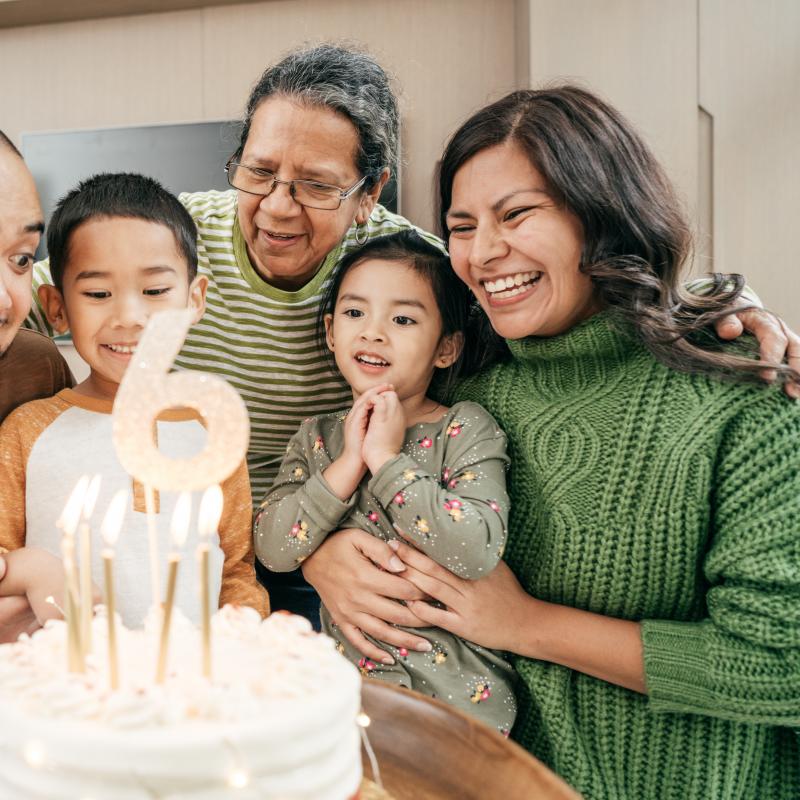Children are less likely than adults to become ill with COVID-19, but the impacts of the pandemic on children will be deep and long-lasting. As it has with adults, COVID will disproportionately hurt minority children, because we went into this crisis with very serious, long standing inequities and higher vulnerability among black, Hispanic and Native American children. Both the health and the economic implications of COVID are affecting and will continue to affect minority children disproportionately. We need to say this explicitly and we need to have mitigation strategies that fully recognize and address these inequities.
Existing research suggests how the epidemic will impact children
I started my career looking at the link between residential segregation, inequities in neighborhood conditions, and infectious diseases. What is happening now with COVID is coming full circle to what we faced with AIDS and tuberculosis in the 1990s. The same reality of segregation and stark neighborhood inequities is fueling inequities in COVID that are impacting children in many ways.
While, so far, COVID has not directly impacted children the way, for example, the Zika virus did, it is affecting children in many ways that we are not fully seeing yet, but that could have long lasting consequences.
Here is what we know from our own research pre-COVID. Black children are nearly 8 times more likely to live in very low-opportunity neighborhoods than white children. And Hispanic children are more than 5 times more likely to live in very low-opportunity neighborhoods than white children.
So, why does this matter for understanding COVID? Lower opportunity neighborhoods have a high prevalence of many risk factors for COVID, such as a higher prevalence of preexisting health conditions and lack of health insurance; low-wage employment and poverty; and high levels of density and overcrowding.
"While, so far, COVID has not directly impacted children the way, for example, the Zika virus did, it is affecting children in many ways that we are not fully seeing yet, but that could have long lasting consequences. "
COVID is exacerbating inequities among children
Parents who are essential workers can’t homeschool their children. We are hearing from those on the front line, like pediatricians working at children's hospitals, that in lower opportunity neighborhoods, children are facing significant challenges coping with the pandemic. For example, all children are out of school, but in very low-opportunity neighborhoods, parents often cannot care for children or help them with school work because they hold essential jobs.
Unequal experiences of loss and grief for minority children. Children are experiencing the threat, disruption, fear and economic insecurity associated with the crisis. For some children, the effects will be even more direct and devastating. Some will lose a parent, grandparent or close relative.
Prior to the pandemic, there were already stark inequities in the experience of loss and grief. Compared to whites, blacks are at twice the risk of losing a mother and at an about 50% greater risk of losing a father by age 20. COVID will exacerbate these inequities among children.
Because of high levels of segregation, grief and economic disruption will be highly geographically concentrated in the neighborhoods where many black and Hispanic children live.
Economic disruption likely to produce drastic increases in poverty rates. Child poverty will increase and its effects will also be disproportionately concentrated among minority families and neighborhoods. Before the pandemic started I had the honor of working on the 2019 National Academy of Sciences report A Roadmap to Reducing Child Poverty. Our report outlined changes in social policy that could help us achieve the goal of cutting child poverty by 50%. Now, due to this crisis, we are faced with the serious possibility of an increase of 50% in child poverty.
Poverty rates were already much higher for minority children—white-8%; black-18%; Hispanic-22%—and the pandemic will magnify those gaps. The Center on Poverty and Social Policy at Columbia University estimates that a 30% unemployment rate due to COVID would increase poverty rates among children by more than half: from about 14 percent to about 21 percent—an increase of 7.3% percentage points. And inequities in child poverty will also increase.
This is extremely serious. Child poverty has severe consequences for children, which persist through the life course. For example, children who grow up poor are more likely to be poor as adults. We already had about 10 million children growing up poor. The pandemic could add more than five million.
Immigrant children are experiencing disproportionate hardship. We know that immigrant parents are doing some of the most dangerous jobs in our economy with much lower access to health insurance and medical leave. Because of the punitive anti-immigrant environment, children in immigrant families are even more vulnerable to economic hardship and inadequate access to health care.
"We already had about 10 million children growing up poor. The pandemic could add more than five million."
What can we do today and in the longer term to protect the most vulnerable children?
Expand and improve anti-poverty programs. In the short term, we must use our major anti-poverty programs such as SNAP with a particular focus on children and adapt programs to the current situation. For example, families should be able to use SNAP benefits for home delivery. In the longer term, we need to change anti-poverty programs to be more inclusive of all families and children who need them, and to protect children when parents are not employed. Universal health care is an obvious next step. We also need child benefits that are not tied to parental employment, such as a child allowance.
Relief funds should include all children. We need to make sure that economic relief reaches all the children who need it. Immigrants who do not have a social security number are not eligible for the economic relief package. Most children of immigrants are U.S. citizens by birth and should have access, in principle, but their families will have fewer resources because the CARES Act excludes U.S. citizen children of undocumented immigrants.
Additionally, although the administration has clarified that accessing testing and treatment due to COVID will not be used as evidence of being a “public charge,” immigrant parents are, understandably, afraid and reluctant to access services.
States and towns should step up outreach to immigrant communities to clarify what they are eligible for and help them access the supports they need.
Move forward with an explicit focus on equity. I’m glad to see public health bring a much needed focus on the equity aspects of the pandemic. Health departments in several states like Massachusetts, Illinois, Ohio and New Jersey are doing this and seeing what measures will protect vulnerable populations. I am honored to serve on the Massachusetts Department of Public Health's equity task force, and I’d like to see more states follow suit.
A continued focus on equity will require that public health surveillance data and economic data be disaggregated by race/ethnicity and down to the neighborhood level. But data alone is not sufficient: we need to provide testing, treatment and economic relief for the most affected groups, with explicit guidelines to facilitate access and prevent stigmatization.
I began my career researching the intersection of residential segregation and a public health crisis that had disproportionate effects on minorities. Two decades later, I am deeply saddened to be witnessing the same patterns. In the intervening years, we have learned a lot about how neighborhood conditions, policy choices, economic structures and institutionalized racism work together to impact children’s health and wellbeing. Undoing these patterns will be difficult, but making the needed changes is entirely possible. I am optimistic that over the next two decades we can apply what we will have learned in our response to the current public health crisis and work together to create conditions for all U.S. children to thrive regardless of their race, ethnicity or family income.



